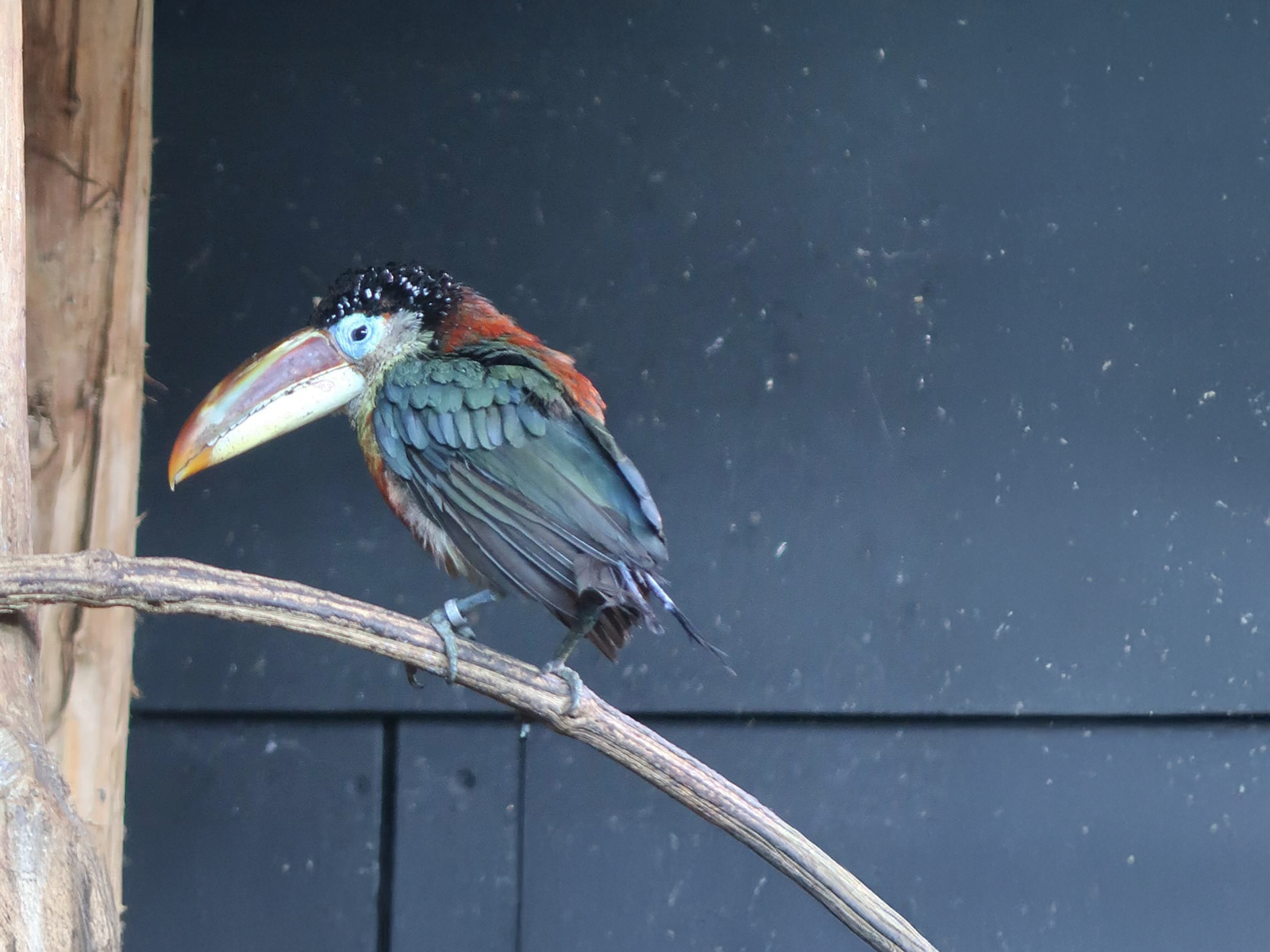Curl-Crested Araçari
Their genus name, Pteroglossus, means “feather-tongue,” a great description of how their tongues look.
Day of Creation: five
Biblical Kind: toucan (includes all toucans, toucanets, and araçaris)
Status: least concern
Length: 15–18 inches (38.1–45.7 centimeters)
Weight: 5–10 ounces (141.7–283.5 grams)
Habitat: humid tropical forests of the southwestern Amazon Basin
Lifespan: 10–20 years
Diet: fruits, eggs, chicks
Family Life: live in small flocks of ~12 birds
Reproduction: 3–4 chicks hatch after 16-day incubations
Fun Facts
Curl-crested araçaris (pronounced ah-rah-SAR-ees) are named for their curly black head feathers resembling shiny enamel or plastic. The word “araçari” comes from the Tupi word for the birds.
The large bills of toucans are quite light as they are partly hollow inside. The rest is made from a foamlike network of bony fibers with membrane centers—like tiny drums.
Toucan beaks are used for many purposes, including communication, courtship, foraging, sparring, and body temperature control.
Toucans have special ball-and-socket joints in their tails. They allow these birds to snap their tails forward to cover their bills while sleeping.
Mated pairs of curl-crested araçaris will separate from their flocks during breeding season and make nests in tree cavities, usually those abandoned by woodpeckers. Both parents raise the chicks, which are helpless when hatched and require intense care. They grow fast and fledge after six weeks.


